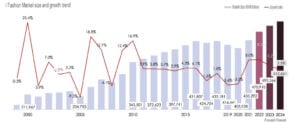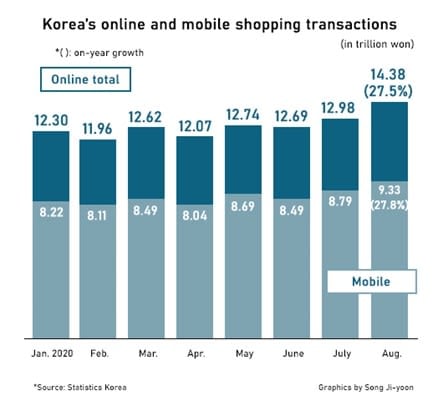The Fashion Industry in South Korea
South Korea is considered a trendsetter not only within Asia but also globally due to the influence of K-pop and K-beauty. The fascination with Korean pop culture has greatly contributed to the rise of luxury brands consumption both by tourists and locals, and Seoul has become one of the most important fashion capitals in the east, with Seoul Fashion week leading a unique approach to fashion.
There is no doubt that Koreans have a strong sense of style. Gucci, Chanel, Louis Vuitton, Burberry, and Prada are only a few of the brands that millennials carry around during their city strolls, especially in richer districts such as Gangnam.
Not only luxury goods, but also independent brands are flourishing in South Korea. Local brands make up a considerable chunk of the total fashion sales, fueled by the strong street style influence amongst the younger generations.

The rapid adoption of new trends is one of the main reasons why brands often use the country as a test for entering Asian markets. Even China and Japan look up to Korea’s energy and creativity in design and fashion.
The Potential of e-Commerce in retail
A thriving retail market and tech-savvy population make South Korea ideal for mobile marketing and e-commerce. The country is the world 5th largest e-commerce market in the world and is expected to become the 3rd largest after China and the US within 5 years.
Even before Covid-19 radically affected Asian consumer behavior, Korean consumers already did most of their shopping online, but the sector reached a record high in August 2020 (still not beaten in 2025) due to the strengthened social distancing measures during the rainy season.

Digital Strategies for the Retail Sector in Korea
We have already listed some reasons why global brands should invest in SEO and Social Media strategies to reach digitally-savvy Korean consumers.
In terms of brand credibility, the average Korean will only trust brands that are listed on Naver, the country’s preferred search engine with 58% of the market share as of 2025. Getting awareness on Naver is one of the main struggles for foreign brands that want to penetrate the market. SEO is a good start, but paid search and regular posting on Naver properties (Naver Blog or Cafe) are also great ways to increase the possibilities of showing up in the SERP.
Social Media platforms are also key for brands that want to grab the attention of millennials and Gen Z. For example, in Kakao, brands’ owners can create channels similar to Facebook pages where they can post for free and send direct messages to their followers. Instagram is also a major Social Media platform where small retail stores can increase their brand awareness and drive sales.

Doing partnerships with Korean influencers is another great way to get brand awareness in a short period of time. YouTube is by far the favorite social media platform for Korean users and collaborating with famous YouTubers has proven to be very profitable for brands. South Koreans are also heavily influenced by local celebrities and pop stars. People with mass following are called KOL (Key Opinion Leaders) who are able to dominated the public’s perception, so it is not a surprise that many western brands are using these influencers as brand ambassadors.
Conclusion
South Korea is one of the most digitally-advanced countries in the world, and retail brands can take advantage of it with the help of the right tools. A total approach to digital marketing (including organic, paid search and social media) will be key to win the hearts of Korean consumers. If you would like to promote your brand in South Korea, reach out to InterAd to receive an expert’s opinion.





